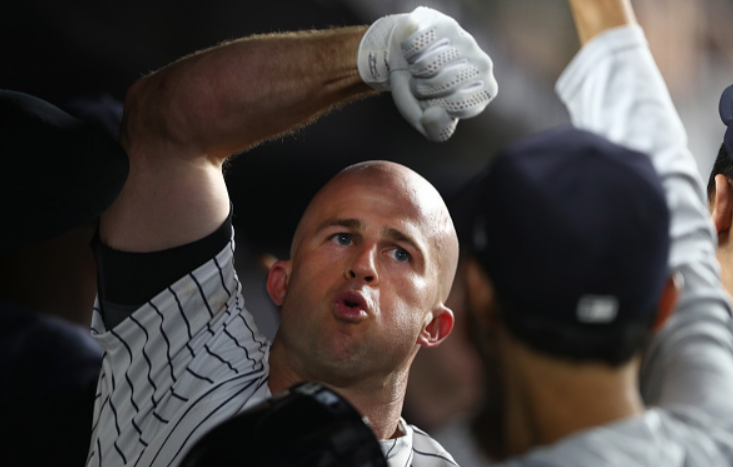Talk this offseason included the bind the New York Yankees would be in with crossing the luxury tax threshold in 2021. The competitive balance tax is set for $210 million this season and the Yankees have been adamant about staying under that number. With some dead weight falling off the books, a key salary dump trade, and the front office working the numbers like an NFL team with a hard cap, the Yankees look to be on their way to doing that. All while improving on the diamond in the process.
According to spotrac.com, the Yankees were over the luxury tax by approximately $50 million in 2020, which led to a tax bill of over $22 million. The Yankees cleared the threshold in 2019 as well, putting them on pace to be three-peat offenders this coming season.
This from mlb.com details how the Competitive Balance Tax works for repeat offenders: “A club exceeding the Competitive Balance Tax threshold for the first time must pay a 20 percent tax on all overages. A club exceeding the threshold for a second consecutive season will see that figure rise to 30 percent, and three or more straight seasons of exceeding the threshold comes with a 50 percent luxury tax.”
Even though fans grew accustomed to the Bombers spending at will under George Steinbrenner, the consequences for passing the tax threshold for three straight years are too substantial under today’s rules. As it stands now, there are close to $6 million dollars for the front office to play with this season before reaching the Competitive Balance Tax.
The best thing for the Yankees was J.A. Happ’s contract running out and his $17 million tax hit coming off the books. Masahiro Tanaka had an expiring contract that cleared just over $22 million. Finally, James Paxton and Tommy Kahnle had a combined luxury tax figure north of $15 million in 2020 and are no longer around. The total for those four pitchers was approximately $54 million. The ending of their contracts worked perfectly to get the Yankees under the $210 million threshold, but that’s before raises and filling out the roster was figured in.
General manager Brian Cashman moving Adam Ottavino’s $9 million salary was ultimately right in order to improve his team while staying under ownership’s mandate, even if some of the hate on his performance last year was overblown.
The most impressive moves of the offseason, however, were the signings the Yankees were able to make. Senior VP and Assistant GM, Jean Afterman, was most likely instrumental in the workings as she has been in the past. Baseball America had a piece on Afterman in 2019 after she won the Trailblazer of the Year Award in which it quoted owner Hal Steinbrenner and Cashman on the importance of Afterman in contract negotiations and player acquisitions.
This offseason, the Yankee brass was able to re-sign an MVP candidate to a mere $3 million raise, get the Boston Red Sox to take on all but $1.8 million of Ottavino’s contract, sign a reliable replacement in Darren O’Day for $1.75 million and add pitching depth to hang around in the minors at a minimal cost. Corey Kluber is making $11 million, but the Yankees are clearly more excited about his bounce-back potential than another season with Happ or Paxton.
The vet and the kid. @DODay56 x @wellsius16 pic.twitter.com/e6TZGB65mN
— New York Yankees (@Yankees) February 21, 2021
Yet, those weren’t all the moves. Jay Bruce and Robinson Chirinos were signed to minor league deals and are major league caliber hitters, even if just part-time, situational bats.
Plus, the smartest signings were saved for the Yankees’ last additions of the offseason, working signing bonuses, incentives, and options into the contracts of Brett Gardner and a little surprise signing of Justin Wilson.
Justin Wilson gets $5.15M plus incentives on Yankees deal.
$2,850,000 – 2021
Player Option 2022 for $2,300,000.
If Player Option not exercised, Club option 2022 for $7,150,000 or $1,150,000 buyout.
If Player Option exercised, Club Option 2023 for Minimum + $500,000.
— Jon Heyman (@JonHeyman) February 23, 2021
PECOTA projections had the Yankees winning 97 games, five more than any other American League team, the Houston Astros, and 11 more than the Tampa Bay Rays. That was as of Feb. 15, so the newest signings should push that number up another win or two. The latest signings leaving the Yankees with approximately $6 million in wiggle room for the rest of the season is a win as well. Players will be added to the 40-man roster during the season, which will eat at that, though incrementally, but it’s the possibility of an in-season trade to fill any holes that may arise that is the selling point.
There will still be fans that are upset about not going after Trevor Bauer, as they don’t care how much the Yankees spend, but in the end (though we’re at the beginning) it has worked out. The Yankees should be able to reset their tax penalty next year to go after some top free agents and they are going to put a better team on the field in 2021 than they did in 2020.





